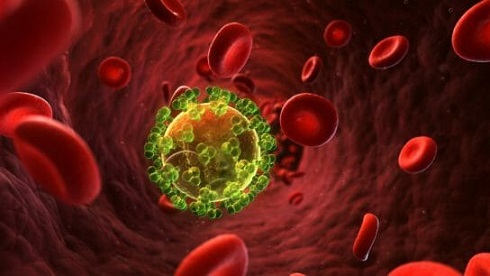HIV News: U.S. Study Discovers Two Different Reservoirs Of Latent HIV In Infected Individuals, Furthering Complicating The Search For A Cure!
HIV News - Two Separate Latent HIV Resevoirs Feb 01, 2023 2 years, 10 months, 3 weeks, 1 day, 23 hours, 35 minutes ago
HIV News: Researchers from the University Of North Carolina-United States have discovered that beside the CD4+ cells in blood and lymph tissues that serve as a reservoir for latent HIV, the T Cells in the CNS (Central Nervous System) are also another reservoir for latent HIV virus! This further adds to complications for researchers trying to find a cure for HIV.

Typically, when individuals living with HIV take antiviral therapy (ART), their viral loads are driven so low that a standard blood test cannot detect the HIV virus.
But once ART is stopped, detectable HIV re-emerges with new cells getting infected. This is termed as "rebound" virus, and the cells that release the virus to re-ignite the infection come from a small population of HIV-infected CD4+ T cells that’s serves as a reservoir of latent HIV remains dormant in blood and lymph tissue while individuals were on ART.
This problem of latency, and overcoming it remains a major hurdle for scientists trying to create curative therapies for HIV including the study team from the University Of North Carolina HIV Cure Center.
The study team that discovered this second reservoir of latent HIV was led by virologist Dr Ron Swanstrom, Ph.D., Director of the UNC Center for AIDS Research and the Dr Charles P. Postelle, Jr. Distinguished Professor of Biochemistry & Biophysics at the University Of North Carolina School of Medicine.
The study findings were published in the peer reviewed journal: Nature Microbiology.
https://www.nature.com/articles/s41564-022-01309-3
The study team from University Of North Carolina along with collaborators from the University of California-San Francisco, Yale University and the University of Gothenburg in Sweden, and others, provide indirect evidence for the existence of a distinct latent reservoir of CD4+ T cells in the central nervous system (CNS).
The study team accomplished this by analyzing rebound virus in the cerebral spinal fluid (CSF) during the period when individuals had just stopped taking ART.
Dr Swanstrom who is also senior author of the study told
HIV News reporters, "Our detailed study rebound virus suggests latently infected T cells in the CNS are separate from the latent reservoir in the blood. Our analysis allows us to infer the presence of a distinct pool of latently infected cells in the CNS waiting to reinitiate infection once ART is interrupted."
The study compared the genetic sequences of rebound virus particles when ART was discontinued in 11 human participants.
This unique approach allowed the scientists to assess the similarities between viral populations in the blood and CSF to determine whether they were part of a common latent reservoir. In many cases, the viral populations were not the same, which suggested they can represent different populations of latently infected cells.
When ART is interrupted (treatment interruption/TI), rebound virus re-initiates systemic infection in the lymphoid system. During TI, HIV-1 is also detected in cer
ebrospinal fluid (CSF), although the source of this rebound virus is unknown.
Peak rebound CSF viral loads vary and the study team showed that high viral loads and the appearance of clonally amplified viral lineages in the CSF are correlated with the transient influx of white blood cells.
The research team also studied details of viral replication to determine if rebound virus had been selected for replication in CD4+ T cells, the primary home of the virus or had evolved to replicate in central nervous system myeloid cells, such as macrophages and microglia.
The study team found no evidence of rebound macrophage-tropic virus in the CSF, even in one individual who had macrophage-tropic HIV-1 in the CSF pre-therapy.
All the rebound viruses tested were adapted to growth in T cells. For several participants, the researchers also compared viral populations in blood and CSF before ART initiation and after ART was stopped.
These detailed studies provide further evidence that HIV-infected CD4+ T cells can cross over from blood into the CNS, but also that some latently infected cells may be resident in the CNS during therapy.
According to the study team, any curative therapy would need to activate this dormant reservoir, as well as the latent reservoir in the blood and lymph tissue.
To investigate whether there is a distinct HIV-1 reservoir in the central nervous system (CNS), we compared rebound virus after TI in the blood and CSF of 11 participants.
The study findings propose a model in which R5 T cell-tropic virus is released from infected T cells that enter the CNS from the blood (or are resident in the CNS during therapy), with clonal amplification of infected T cells and virus replication occurring in the CNS during TI.
For the latest
HIV News, keep on logging to Thailand Medical News.
